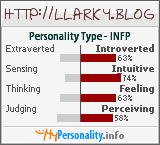"An interesting bodily reflection of humans’ shared intentionality is the sclera, or whites, of the eyes. All 200 or so species of primates have dark eyes and a barely visible sclera. All, that is, except humans, whose sclera is three times as large, a feature that makes it much easier to follow the direction of someone else’s gaze.(This reminds me of my baby bird. Since his eyes are just two big, dreamy pupils, he has to constantly turn his head to protect himself from my random finger raids. Does my talk about my babybird make your stomach churn? Am I too emotionally sensitive to you? Well good, I hope you upchuck on your keyboard. And I hope some of your vomit residue gets stuck and corrodes your key matrix too). Chimps will follow a person’s gaze, but by looking at his head, even if his eyes are closed. Babies follow a person’s eyes, even if the experimenter keeps his head still."
"Advertising what one is looking at could be a risk. Dr. Tomasello argues that the behavior evolved “in cooperative social groups in which monitoring one another’s focus was to everyone’s benefit in completing joint tasks.”
“Humans putting their heads together in shared cooperative activities are thus the originators of human culture,” Dr. Tomasello writes.
Socialist Humanism, anybody? Good grief, now I feel like Edgar Allan Poe. Mean, mean, mean.

No hay comentarios:
Publicar un comentario